Garden Maintenance in Garden Fence Installation
Introduction to Garden Fence Installation
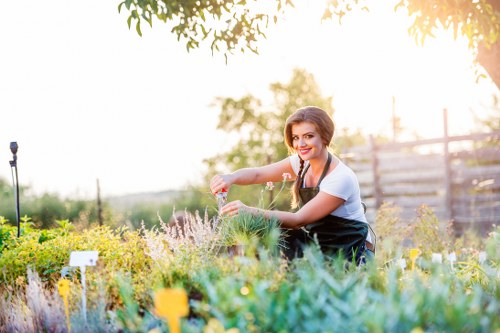
When it comes to garden maintenance, one of the key elements that stands out is the installation of a garden fence. A well-installed fence not only defines the boundaries of your garden but also adds aesthetic value, enhances security, and contributes to the overall health of your plants.
Choosing the right type of fence is crucial. It should complement your garden's style, provide the necessary protection, and require minimal maintenance. Whether you prefer a classic wooden fence or a modern metal one, understanding the fundamentals of fence installation is essential for effective garden maintenance.
Moreover, proper fence installation can prevent unwanted pests from invading your garden, reduce noise pollution, and offer privacy, making your outdoor space more enjoyable and functional.
Benefits of a Well-Maintained Garden Fence
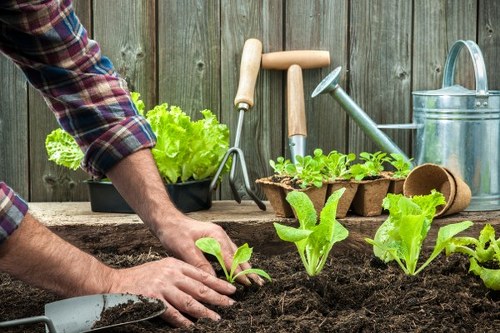
A garden fence serves multiple purposes beyond just marking property lines. Here are some key benefits:
- Security: A sturdy fence deters intruders and keeps animals out, ensuring the safety of your garden.
- Privacy: It provides a secluded space where you can relax without disturbances.
- Protection: Shields plants from harsh weather conditions and pests, promoting healthier growth.
- Aesthetic Appeal: Enhances the visual appeal of your garden, adding character and charm.
Choosing the Right Fence Material
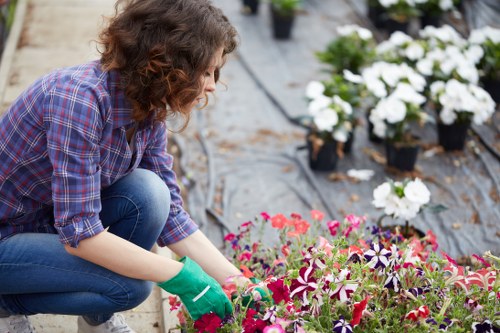
Selecting the appropriate material for your garden fence is a critical decision that impacts both maintenance and longevity. Common materials include:
- Wood: Offers a natural look and is highly customizable but requires regular treatment to prevent decay.
- Vinyl: Low maintenance and durable, resistant to weather and pests, though less natural in appearance.
- Metal: Provides excellent security and longevity, available in various styles like wrought iron or aluminum.
- Composite: A blend of materials that combine the best features of wood and plastic, offering durability with a natural appearance.
Planning Your Fence Installation
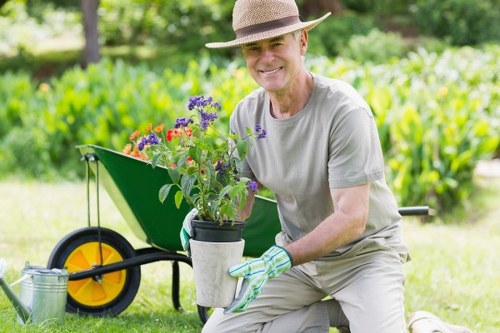
Proper planning is essential for successful garden fence installation. Consider the following steps:
Assessing Your Garden's Needs
Begin by evaluating what you want to achieve with your fence. Do you need enhanced security, increased privacy, or simply an aesthetic addition? Understanding your goals will guide your material and design choices.
Measuring and Marking
Accurate measurements are crucial. Use stakes and string to outline the fence perimeter, ensuring it follows property lines and any local regulations.
Obtaining Permits
Check with your local municipality to determine if you need permits for fence installation. Compliance with zoning laws and property boundaries is important to avoid legal issues.
Step-by-Step Fence Installation Process
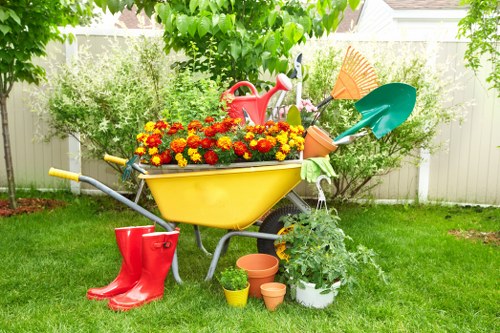
Installing a garden fence involves several key steps:
- Preparing the Site: Clear the area of debris and vegetation. Ensure the ground is level and suitable for fence posts.
- Setting the Posts: Digging post holes at regular intervals, typically 6-8 feet apart, and securing them with concrete for stability.
- Attaching Fence Panels: Once the posts are set, attach the fence panels or rails according to your chosen design.
- Finishing Touches: Apply paint or sealant if necessary, and add gates or additional features as desired.
Maintenance Tips for Longevity
To ensure your garden fence remains in top condition, follow these maintenance tips:
- Regular Cleaning: Remove dirt, debris, and overgrown plants that can damage the fence structure.
- Inspect for Damage: Periodically check for loose boards, rust spots, or other signs of wear and repair them promptly.
- Protective Coatings: Apply stains, paints, or sealants to wooden fences to prevent moisture damage and extend their lifespan.
- Vegetation Control: Keep plants and vines from climbing the fence to avoid added stress and potential structural issues.
Integrating Fencing with Garden Design
A garden fence can be a functional and beautiful element of your outdoor space. Here’s how to integrate fencing seamlessly:
Matching Fence Style with Garden Theme
Choose a fence style that complements your garden’s theme. For example, a rustic wooden fence suits a cottage garden, while a sleek metal fence fits a modern landscape.
Adding Decorative Elements
Incorporate decorative elements such as lattice panels, trellises, or ornate post caps to enhance the fence’s visual appeal.
Planting Along the Fence Line
Planting shrubs or climbers along the fence can add greenery and soften the fence’s appearance, creating a more harmonious look.
Common Challenges and Solutions
Fence installation and maintenance can present various challenges. Here are some common issues and how to address them:
Pest Infestations
Wooden fences are susceptible to termites and other pests. To prevent infestations, use treated lumber and apply pest-resistant coatings.
Weather Damage
Extreme weather can damage fences. Regular maintenance, such as repainting and repairing damaged sections, helps mitigate weather-related wear.
Uneven Ground
Installing on uneven ground can lead to instability. Level the ground and use adjustable fence posts to ensure a steady installation.
Enhancing Security with Your Fence
For those prioritizing security, a well-installed fence is a deterrent against intruders. Here are some tips to enhance security:
- Height: Taller fences are harder to climb, providing better security.
- Material Choice: Strong materials like wrought iron or steel offer superior protection.
- Lockable Gates: Ensure gates have sturdy locks and are securely attached to prevent unauthorized access.
- Motion-Activated Lighting: Adding lighting can discourage trespassers and improve safety at night.
Eco-Friendly Fence Options
For environmentally conscious gardeners, eco-friendly fence options are available:
Sustainable Materials
Choose materials like bamboo or reclaimed wood, which are renewable and reduce environmental impact.
Low-Impact Production
Opt for fences produced with minimal environmental footprint, avoiding materials that are harmful to the ecosystem.
Green Fencing
Incorporate living fences made of shrubs or trees, which provide natural barriers and contribute to biodiversity.
Cost Considerations
Budgeting for fence installation involves several factors:
- Material Costs: Different materials vary in price; choose one that fits your budget while meeting your needs.
- Labor: Professional installation ensures quality but adds to the overall cost.
- Maintenance Expenses: Consider long-term maintenance costs when selecting materials.
- Design Complexity: More intricate designs may require additional time and resources.
Professional vs. DIY Installation
Deciding between hiring a professional or undertaking a DIY fence installation depends on several factors:
Advantages of Hiring Professionals
- Expertise: Professionals have the knowledge and experience to ensure a proper installation.
- Time-Efficient: Saves you time and effort, especially for large or complex projects.
- Quality Assurance: Guarantees a durable and aesthetically pleasing fence.
Benefits of DIY Installation
- Cost Savings: Eliminates labor costs, making it a more budget-friendly option.
- Customization: Allows for greater control over design and materials.
- Satisfaction: Provides a sense of accomplishment upon completion.
Tools and Materials You’ll Need
- Measuring tape
- Post hole digger
- Level
- Concrete mix
- String and stakes
- Saw (if cutting material)
- Hammer and nails or screws
- Protective gear (gloves, goggles)
Step-by-Step Guide to Fence Installation
Follow this guide to ensure a successful fence installation:
1. Planning and Design
Sketch the layout of your fence, determining the type, height, and materials to use. Ensure the design aligns with your garden maintenance goals.
2. Gathering Materials and Tools
Collect all necessary materials and tools before beginning to streamline the installation process.
3. Marking the Fence Line
Use stakes and string to outline the fence path, ensuring it follows property boundaries and is straight.
4. Digging Post Holes
Using a post hole digger, create holes at regular intervals, typically 6-8 feet apart, ensuring they are deep enough for stability.
5. Setting the Posts
Place the fence posts in the holes and fill them with concrete, allowing ample time to cure for maximum strength.
6. Attaching Fence Panels
Once the posts are secure, attach the fence panels or rails, ensuring they are level and properly aligned.
7. Finishing Touches
Add any additional features such as gates, decorative elements, or protective coatings to complete the installation.
Maintaining Your Garden Fence
Regular maintenance ensures the longevity and functionality of your garden fence:
- Inspection: Regularly inspect for signs of damage or wear.
- Cleaning: Keep the fence clean from dirt, mold, and plant growth.
- Repair: Address any issues promptly to prevent further damage.
- Protective Treatments: Apply sealants or paints as needed to protect against the elements.
Enhancing Your Garden with Fences
A garden fence can be more than just a boundary; it can enhance the overall garden experience:
Creating Defined Spaces
Use fences to create separate areas within your garden, such as a seating area, vegetable patch, or flower beds.
Adding Vertical Interest
Incorporate vertical elements like climbing plants or decorative panels to add depth and interest to your garden.
Integrating Lighting
Install lighting along the fence to illuminate pathways and highlight garden features, enhancing both functionality and ambiance.
Sustainability in Fence Installation
Embracing sustainable practices in fence installation benefits both your garden and the environment:
- Recycled Materials: Use materials that have been repurposed or recycled to reduce waste.
- Energy-Efficient Production: Select products manufactured with minimal energy consumption.
- Durable Designs: Invest in high-quality materials that last longer, reducing the need for frequent replacements.
Legal Considerations for Fence Installation
Understanding local regulations is essential to avoid legal complications:
Property Lines
Ensure your fence is within your property boundaries to prevent disputes with neighbors.
Height Restrictions
Local ordinances may dictate the maximum height of fences, so check before installation.
Permits and Approvals
Some areas require permits for fence installations, especially for certain materials or designs.
Innovative Fence Designs
Modern fence designs offer a blend of functionality and style:
Living Fences
Incorporate plants directly into your fence design, creating a living barrier that enhances biodiversity.
Modular Fences
Use modular components that can be easily reconfigured or expanded as your garden evolves.
Artistic Fences
Add artistic elements such as murals or intricate metalwork to make your fence a focal point.
Conclusion: Elevate Your Garden with Proper Fence Installation
Investing in garden fence installation is a crucial aspect of garden maintenance that offers numerous benefits, including enhanced security, privacy, and aesthetic appeal. By selecting the right materials, planning meticulously, and adhering to proper installation techniques, you can create a durable and beautiful fence that complements your garden and meets your specific needs.
Regular maintenance ensures that your fence remains in excellent condition, providing long-term value and contributing to the overall health and beauty of your garden.
Ready to transform your garden with a new fence? Contact us today to book your fence installation service and take the first step towards a more secure and stunning outdoor space.